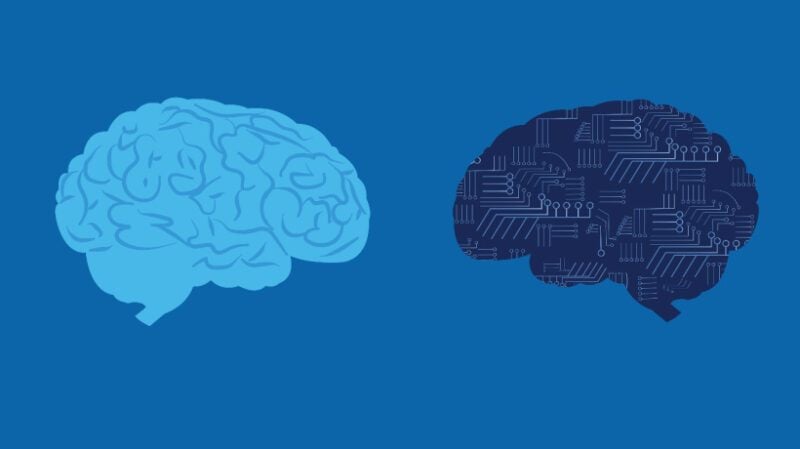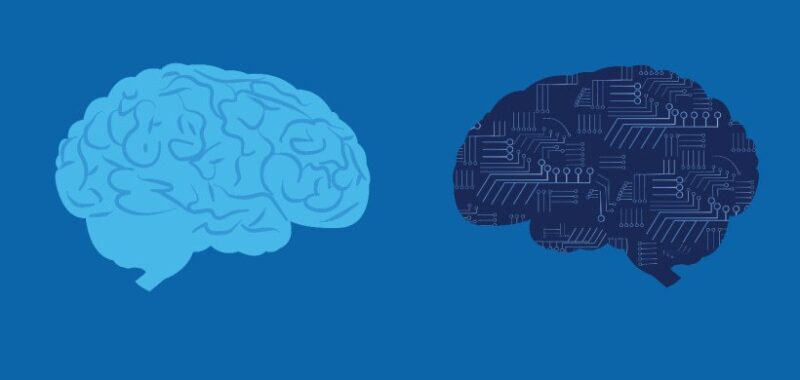
Is SME Involvement Essential When Using AI?
Subject Matter Experts possess deep domain expertise gained through observation and hands-on experience. Their insights are essential for designing relevant, customized learning solutions that truly meet learners’ needs. Below are five key guidelines to help you determine when SME involvement is essential—and when to combine AI-generated content with SME insights for the best results.
AI Vs. SMEs: Five Key Guidelines
1. Shhh, It’s Proprietary
AI <———————-|———————-> SME
(Public Data) (Proprietary)
Every organization has tools, technology, and best practices that make it successful. Can you find that secret sauce through AI? The answer is “not likely” because organizations need to guard this information closely for competitive purposes.
For example, you create onboarding content to show how an organization uses proprietary technology to meet various customer needs. Through an AI search, you find articles about technology, including case studies, published in trade magazines. That’s nice, but these articles do not address what the new hires need to learn.
You can only draw these nuances from Subject Matter Experts, who typically have a wealth of knowledge about technology and the ability to apply this complex knowledge to various situations.
2. Human Expertise Matters When Stakes Are High
AI <———————-|———————-> SME
(Low Stakes) (High Stakes)
A recent Los Angeles Times article highlighted the controversy around replacing SMEs with AI. The State Bar of California admitted it used AI to develop exam questions, triggering new furor. Mary Basick, assistant dean of academic skills at UC Irvine School of Law, told the Times that “I’m almost speechless. Having the questions drafted by non-lawyers using Artificial Intelligence is just unbelievable.”
This case study raises multiple issues that impact the use of AI in the future.
- Transparency
Using AI to generate exam questions without informing test-takers compromises fairness—especially when the outcome significantly affects their careers. - Ethics
Using AI is not ethical when it misleads others about how the questions were generated. - Academic integrity
Using AI to create exam questions undermines the credibility of the exam, the examiners, and its governing body. - Accuracy
AI-generated content is not always correct. We are familiar with AI’s tendency to hallucinate with its answers. In high-stakes scenarios—such as the bar exam—correct questions are non-negotiable.
Clearly, AI is not the solution when the stakes are high (for example, certification) and academic integrity is paramount. There are also issues of answer contamination with responses that may be “sycophantic” (AI agrees with you) or “sandbagging” (AI provides answers based on clues in your question).
3. Type Of Knowledge: General Vs. Customized
AI <———————-|———————-> SME
(General) (Customized)
Learning professionals are already using AI to learn about new topics and create content. AI provides access to multiple sources of general knowledge, including real-world industry practices, case studies, trends, leadership behaviors, and industry best practices to help novices achieve a basic level of competence in a topic. Collaborating with an SME is essential for developing learning content tailored to a specific organization, process, or tool.
Let’s look at an example. You have been tasked with improving collaboration between two business functions at key points of interaction. Employee surveys have shown a lack of understanding across roles and discontent with the current quality of interactions.
You use AI to generate the best practices and case studies around effective collaboration from industry leaders. However, this knowledge is too broad to ensure actionable and authentic learning for your audience. You now need to drill down to discover how you can customize this general knowledge to specific roles or domains.
You work closely with SMEs from both functions to elicit real-life scenarios that include cross-functional pain points. You design a workshop for in-person or virtual delivery. While workshopping these scenarios and choosing the best answers, learners reflect on mistakes to avoid and best practices.
4. Learner Outcomes: Understand Vs. Apply
AI <———————-|———————-> SME
(Understand) (Apply)
The collaboration example above illustrates how you can customize knowledge for a specific domain. This example also shows the differences between understanding a topic and applying it to new situations.
Considering Bloom’s taxonomy of objectives, AI is most suited to gathering content to “Remember” and “Understand.” SMEs are better suited when you need to elicit content to “Apply” knowledge with real-life scenarios, guidance on gray areas, and best practices.
Here’s an example of how they can work together. A company is adopting a new quality management method, Total Quality Management. To research the new solutions, you leverage AI to find easily digestible information on the frameworks, define the terminology used in documentation provided by the business unit, and research examples of how the framework has been applied across different industries.
You also explore the benefits of the frameworks and the trends surrounding them. These, along with key concepts, will be featured in the “Why” and “What’s in It for Me” (WIIFM) sections of a brief eLearning introduction.
Gaps remain because the true complexity of this topic lies in its on-the-job application, and gathering content from SMEs is essential to address this. With real-life examples, non-examples, stories, case studies, and scenarios, SMEs can help:
- Provide the context needed to apply frameworks.
- Address the gray areas around applying “rules of thumb” on the job.
- Guide novices through complex situations.
- Highlight mistakes to avoid.
- Make abstract concepts real.
- Provide guidance to tackle novel situations.
Once you’ve gathered this information, you can incorporate it into application-based workshops tailored to various roles across the organization. Another advantage: Subject Matter Experts are available to answer questions and support the change process.
5. Let Humans Do What They Do Best
AI <———————-|———————-> SME
(Machine) (Human)
According to the World Economic Forum: Future of Jobs Report 2025, the following are among the top ten most in-demand skills for the coming years:
- Analytical thinking and problem solving.
- Creativity and innovation.
- Emotional intelligence and empathy.
- Resilience, flexibility, and agility.
- Leadership and social influence.
What do all these skills have in common? They are uniquely human strengths! AI may simulate thought, but it cannot feel—the human touch remains beyond its reach. AI doesn’t have subjective experiences or understand context. It also needs a clear structure to produce solid outputs and cannot respond in a meaningful way when encountering situations outside its training.
This is why, when it comes to soft skills, you will still need an SME to create meaningful learning. Imagine if AI existed before 2020 and the onset of the COVID-19 pandemic. Do you think it would have provided the solutions required to provide answers to the pandemic’s unexpected and tragic impacts? In a situation where there was a high degree of uncertainty, nuance, and empathy needed, human expertise was and is still required.
Summary
As AI continues to advance, the question of when to rely on AI versus SMEs will become increasingly important. Currently, the most effective approach to achieving learner outcomes is to combine the efficiency of AI (for general, data-driven knowledge to remember and understand) with the tacit knowledge of SMEs for proprietary, customized, complex, and applied content.

